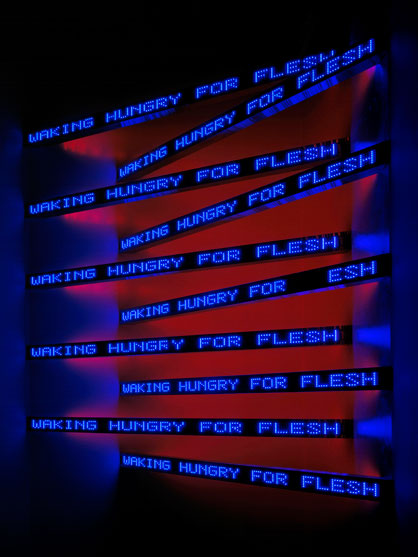
In the January 24th edition of the
New York Times, critic
Randy Kennedy profiles artist Shepard Fairey and the
National Portrait Gallery's acquisition of his iconographic portrait of President Barack Obama. Kennedy dares to suggest that this move symbolizes the blurring of the lines between fine art and what he labels "street art":
So it has been hailed by street-art fans as a significant moment, the fine-art world beginning to find a way to recognize a movement that has been growing apace for more than a decade, propelled by a generation of artists who grew up with graffiti and now make work on the streets with materials as varied (and sometimes as ephemeral) as paper, plastic, tape, snow, rubber bands and knitted wool.Since when did the tradition of screen print posters become canonized into the ambiguous category of "street art"? Should artists like
Shinique Smith and
Jean-Michel  Basquiat
Basquiat, who were heavily influenced by the tradition of graffiti, but whose works are most often exhibited inside gallery spaces and museums, be considered "street" artists as well? How about artists like David Hammons and William Pope L., who often utilize "found" public materials within their installations...are they "street" artists as well?
In short, site-specificity, or the spaces in which art is presented and displayed, public or private, plays a large role into how society consumes it. Distinctions like "fine/high" and "low/street" art are constantly being contested in artistic practices today with a merging of formal and technical artistic traditions within particular expressions that extend from specific subcultures and anti-establishment practices. Perhaps it is necessary to re-examine the roles that museum institutions play in presenting so-called "street" art and facilitate public interpretations of the work itself.
Top: Jean-Michel Basquiat, Untitled, 1984, Acrylic and mixed media on canvas, 86 x 68 in. (218.4 x 172.7 cm)
Bottom: Shinique Smith, Voodoo Children, 2005. Fabric, clothing, accessories and ink. Dimensions variable

 Today Visualité will reach 1000 hits! A small milestone, but a milestone nonetheless. Thanks for your continued support!!
Today Visualité will reach 1000 hits! A small milestone, but a milestone nonetheless. Thanks for your continued support!!





















